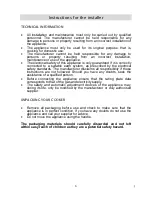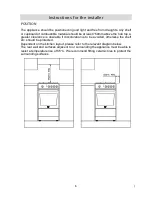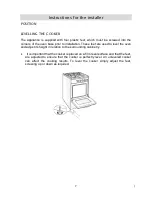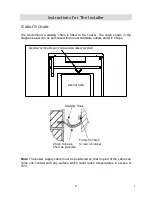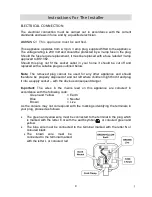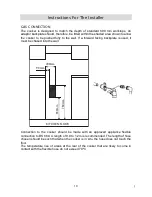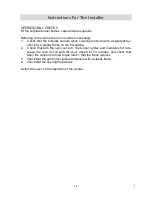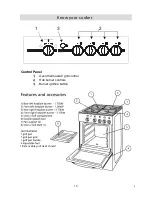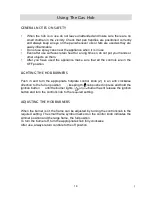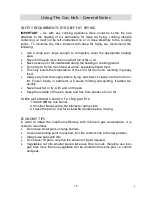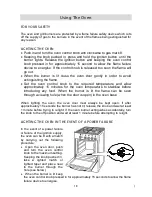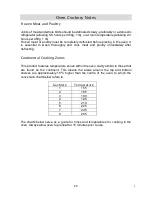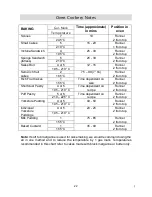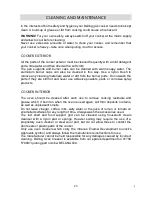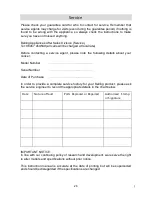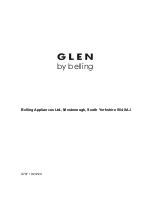
15
Using The Gas Hob – General Notes
SAFETY REQUIREMENTS FOR DEEP FAT FRYING
IMPORTANT –
As with any cooking appliance there could be some fire risk
attached to the heating of oil, particularly for deep fat frying, cooking utensils
containing oil must not be left unattended on or in close proximity to the cooking
zones. To minimise the risks inherent with deep fat frying, we recommend the
following;
•
Use a deep pan, large enough to completely cover the appropriate heating
area.
•
Never fill the pan more than one-third full of fat or oil.
•
Never leave oil or fat unattended during the heating or cooking period.
•
Do not try to fry too much food at a time, especially frozen food.
•
This only lowers the temperature of the oil or fat too much, resulting in greasy
food.
•
Always dry food thoroughly before frying, and lower it slowly into the hot oil or
fat. Frozen foods, in particular, will cause frothing and spitting, if added too
quickly.
•
Never heat fat, or fry, with a lid on the pan.
•
Keep the outside of the pan, clean and free from streaks of oil or fat.
In the unfortunate event of a chip pan fire
1.
Switch
Off
the hob burner.
2. Smother flames with a fire blanket or damp cloth.
3. Leave the pan to cool for at least 60 minutes before moving.
ECONOMY TIPS
In order to obtain the maximum efficiency with minimum gas consumption, it is
useful to remember:
•
Do not use small pans on large burners.
•
As soon as boiling point is reached, turn the control knob to the low position.
•
Always use pans with lids.
•
Do not over fill pans, only boil the amount of liquid required.
•
Vegetables cut into smaller pieces take less time to cook, therefore use less
gas. Also more than one vegetable can be cooked in the same pan, i.e. carrots
and peas.



